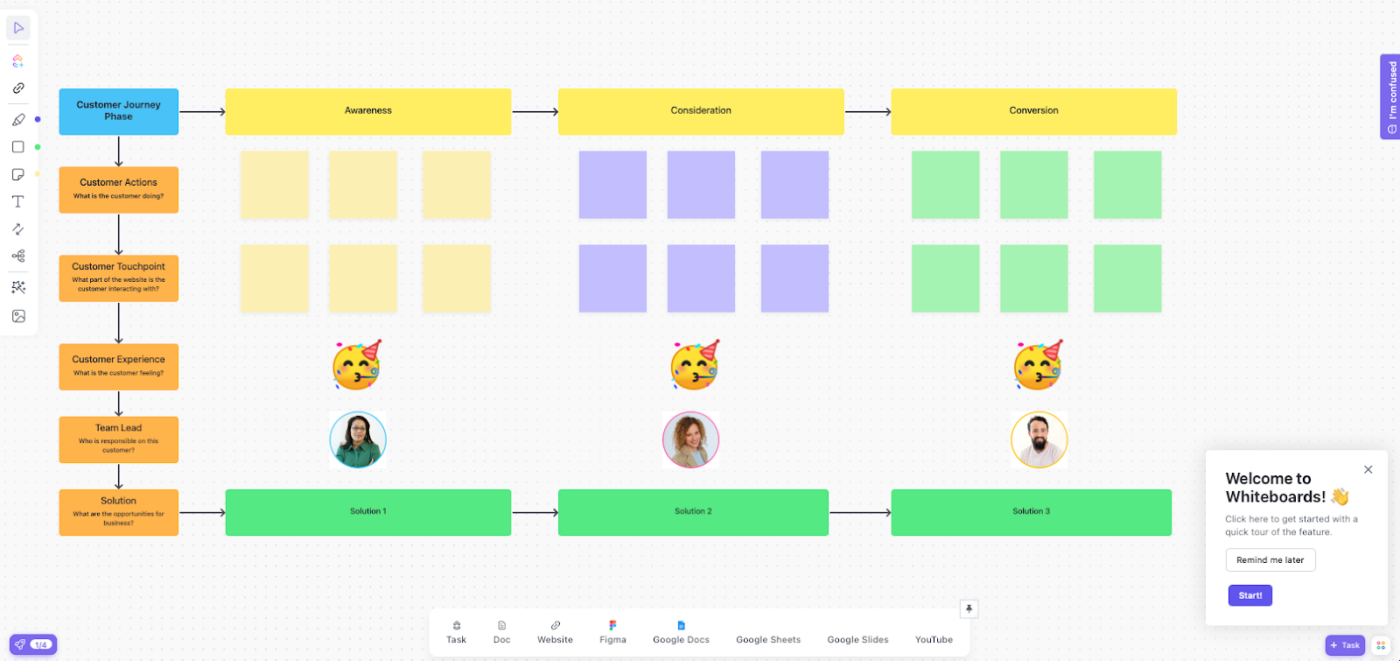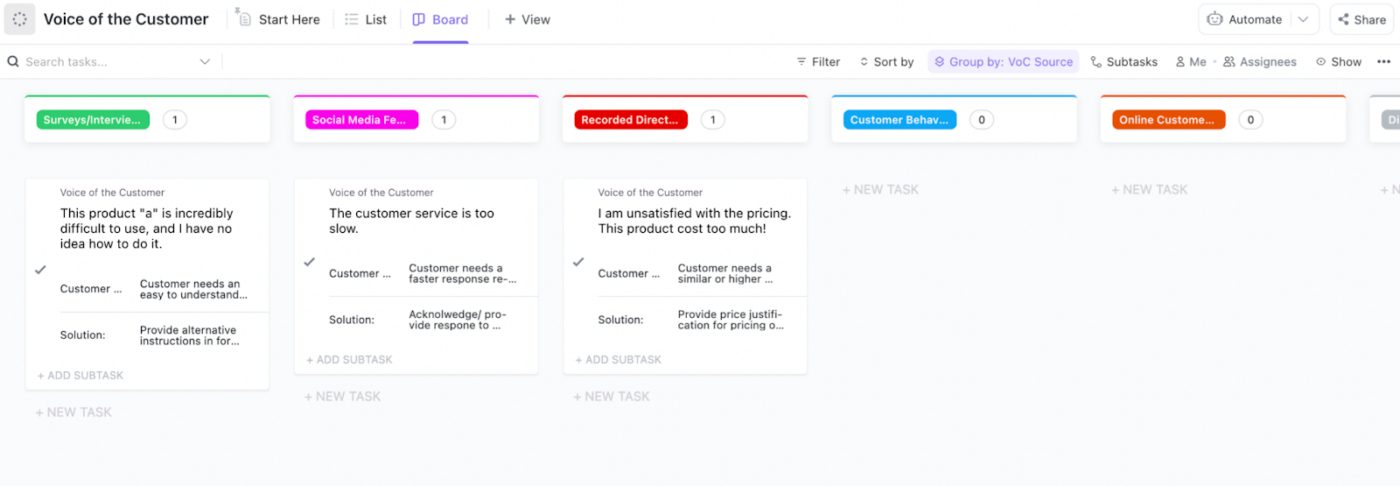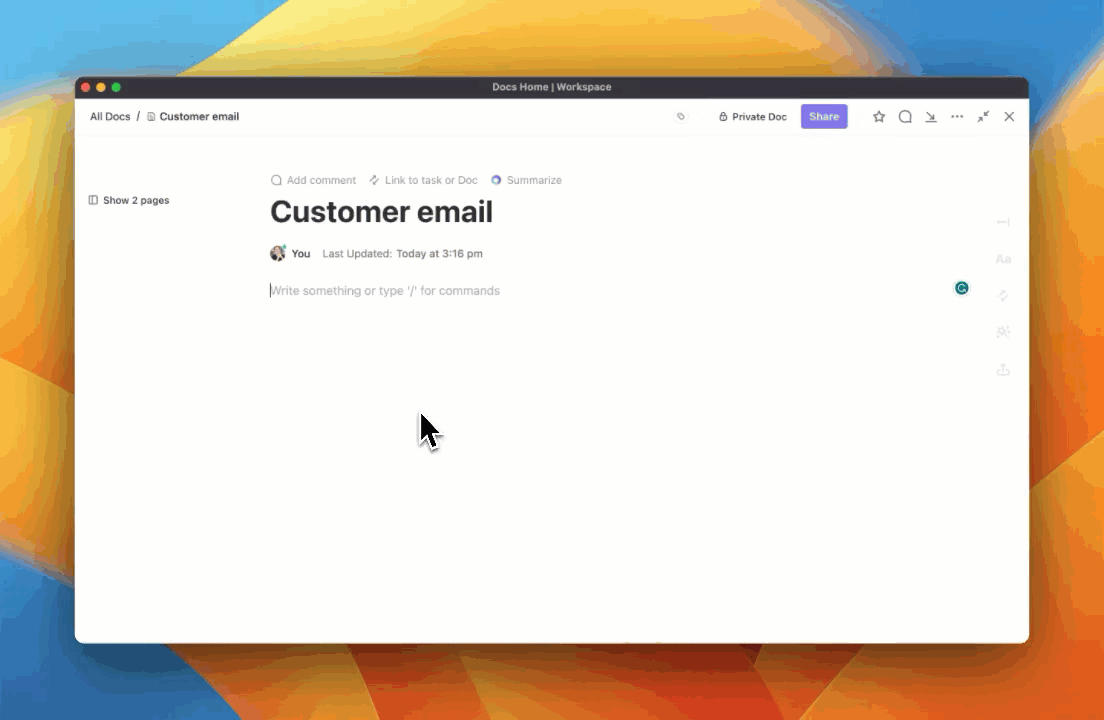

How do brands determine the true value of their customers?
Looking at the entire customer journey—from initial contact to post-purchase support—is a good start.
Lifecycle marketers track user interactions, analyze data to understand customer behavior patterns, and assign value based on factors such as purchase frequency, average order value, and customer lifetime value, and measure the success of these metrics.
Such efforts help segment the customer base granularly, customize the marketing efforts to specific groups, and allocate resources optimally.
With not all customers fitting into the same mold of needs, preferences, and behaviors, it is safe to assume each customer is unique.
Recognizing and respecting these differences between customers form the basis of successful lifecycle marketing.
Use this guide to inform your customer lifecycle marketing efforts and engage customers meaningfully.
What is Customer Lifecycle Marketing?
Customer lifecycle marketing is the practice of personalizing customer communications based on the stage of a customer’s journey with their brand.
This high-level approach leverages a mix of marketing strategies to offer the highest value to customers at each lifecycle stage.
As customers gain more value from your brand, one-time purchases convert to lifelong customer loyalty in the long run.
At the same time, brands benefit from better customer engagement and increased monetization over time.
Benefits of Customer Lifecycle Marketing
It’s common to wonder: What benefits do customers get if a brand markets to each differently?
Effective lifecycle marketing takes a segmented, customer-first approach to the target audience that helps end users relate to the brand’s communication.
With deeper relatability, brands get the confidence to build stronger, mutually beneficial relationships with existing and future customers and create more value:
Research has shown that companies that provide a significantly better customer experience than their peers achieve 70% higher customer loyalty and drive 190% higher revenue growth than peer organizations.
As customers develop an affinity for your brand, (their) sticking around for longer becomes a reality (leading to improved retention!).
6 Stages of Customer Lifecycle Marketing
Impactful lifecycle marketing is possible when you have a deep understanding of the different stages of the customer lifecycle for your product or services.
Customers take different paths when interacting with your business. And every path becomes their “journey” with the brand:

The customer lifecycle is a long-drawn process. It starts with prospects becoming aware of your brand and ends with them becoming brand advocates
A typical customer journey covers six stages: Discovery (or Reach), Acquisition, Conversion, Retention, Loyalty, and Advocacy.
Each stage possesses nuanced characteristics and, by extension, requires a unique approach.
Additionally, you may find customers moving multiple times throughout the six stages as your relationship evolves with them.
Let’s walk through these different stages one by one.
Stage 1: Discovery
The first stage, Discovery (also called Reach sometimes), is about reaching prospective customers when they’re in contemplation mode.
Prospective customers may find you when researching a product online or through positive word-of-mouth recommendations.
This might be the first time a future customer has heard of your brand. Therefore, capitalize on this opportunity to help them learn about your brand or product.
Use these tips to reach out to customers early on in the evaluation process:
- Leverage social media, search engine optimization (SEO), digital marketing, and more to get on your prospect’s radar—be present on the channels they frequent
- Focus on building a connection between the customer’s needs and the product with your marketing message
- Do your homework to see what the competition is doing and read customer reviews to bridge the ‘expectations’ gap
- Market in a way that brings them back—whether for more information or to educate themselves about the brand
Stage 2: Acquisition
Acquisition is about getting customers into your database—irrespective of the acquisition channel they use to reach out to you, such as phone, physical store, website, social media, and more.
For instance, a prospect might visit your store in their city. In this scenario, your team should:
- Spend time with them and respond to their queries
- Try to understand their needs and motivations in depth
- Offer personalized suggestions based on their needs
- Educate them about the recommended product/service
- Request their contact information and offer to share more details or make a follow-up call
On other occasions, if your prospective customer reaches out on the website, you should:
- Provide helpful, educational, and valuable content
- Suggest custom content offers
- Redirect the customer to the pricing page
- Promote meaningful, expert-curated blogs
- Offer a chat option to discuss their requirements further
To cement your relationship further with the prospect:
- Build on what your customer already knows about your brand
- Motivate them to engage in follow-up steps such as requesting a product demo, speaking to a sales representative about price discounts, and so on
- Train your sales and customer service professionals to make a lasting impression on the prospect with knowledgeable answers and prompt query resolution
- Offer valuable content (for example, calculators, checklists, guides related to their problem, etc.) in return for their information
- Track all customer queries and requests in one place, so that nothing gets missed

Stage 3: Conversion
The third stage, conversion, is sometimes also called the purchase stage. By this point in the life cycle, the customer is aware of your brand and products. They have formed a shortlist of potential brands or products for their particular requirement, and you are on it.
They’re happy with the customer experience and ready to purchase.
To make the most of the Conversion stage:
- Clearly call out the value you are providing
- Demonstrate the key USPs of your offering in comparison to that of the competitors
- Implement your learnings of the customer’s wants, needs, and priorities into your marketing campaigns
- Execute a seamless purchase experience
Stage 4: Retention
One of the most difficult stages of the customer lifecycle, the Retention stage entails trying to retain customers.
Marketers often have to think ten steps ahead to keep customers coming back for more.
To create a steady base of repeat customers:
- Ensure your customer service is proactive, not reactive
- Regularly track customer sentiment about your product and customer service
- Make sure customers are getting the most out of your product/service
- Gather real-time feedback to understand what’s working for your customers (and what isn’t) via polls, surveys, interviews, events, contests, and more

- Deliver hyper-personalized experiences that reflect your customer’s preferences and nurture your relationship with them
- Measure your Customer Satisfaction Score and make improvements to stay on top of your game
- Curate personalized rewards for customers and offer enticing product deals, 24×7 support, referral bonuses, etc., to prime customers for stage five
The idea is to convert brand affinity to love, thus reaching the loyalty stage of the customer lifecycle.
Stage 5: Loyalty
Your work doesn’t end with acquiring and retaining customers for your brand. You must also ensure your customers stay happy and consider you for future purchases.
The Loyalty stage is critical; this is your opportunity to turn a customer from a one-time buyer to a repeat buyer.
To keep the customer happy after purchase, marketers should look to build a relationship with them.
- Send them quality and helpful content
- Encourage them to follow your brand on social media, and subscribe to your newsletter
- Share regular updates with them about new features or offers, ensuring you stay top of mind
- Treat them as a valued friend and express your gratitude for their support
- Request for their feedback, and act on suggestions for improvement
Stage 6: Advocacy
Once your customers have developed loyalty toward your brand, your final effort with them should be—turning them into brand advocates.
Customers who are loyal brand advocates can provide you with valuable word-of-mouth marketing. In addition, this section of customers will likely buy more of your products without an incentive and spend more with you over time. Moreover, they can provide valuable feedback and input on improving your existing products or designing new ones.
At this stage, lifecycle marketing should aim to:
- Encourage customers to share their positive reviews on social media and elsewhere
- Offer them membership to loyalty, community, and referral programs with special benefits
- Launch an affiliate program for power users
- Show these customers they are valued, through special deals, events, etc.
Map out your customer lifecycle to make informed marketing decisions backed by data, customer priorities, and the brand’s marketing goals.
Effective Strategies for Each Stage of the Customer Lifecycle

A well-conceived customer lifecycle marketing strategy unlocks higher retention and revenues. However, the customer lifecycle rarely follows a linear progression, making marketing to customers difficult.
Moreover, tying your customer lifecycle marketing efforts to business performance becomes challenging when you have hundreds of segmented customer bases to market to.
Tackle the challenges in your customer lifecycle marketing with future-proof strategies.
Strategy #1: Invest in customer relationship management software
Ask any marketer what their biggest pet peeve is and the (unanimous) answer will be: staying organized.
A Customer Relationship Management tool like ClickUp makes your life easier, allowing you to manage every stage of the marketing lifecycle from within one tool, in a few clicks.
First, the tool helps you make sense of the large amounts of customer data your brand collects at every stage of the lifecycle via emails, ads, newsletter sign-ups, contact forms, store visits, and so on.
You can segment the data by customer personas, behaviors, demographics, etc., create custom fields if you wish, and organize them into lists. You can then use the List View or Table View in ClickUp to organize each segment and its related activity, with tasks, sub-tasks, and multiple tags. ClickUp offers 15+ highly flexible views such as List, Table, Calendar, and more to help you track and manage your accounts.

Second, it comes with performance dashboards comprising 50+ Dashboard widgets to help you visualize customer data in one place:

Third, it enables you to create a single communication hub for collaborating on deals, sending updates to customers and partners, managing and onboarding customers.

All these features collectively help companies to build the ideal customer base of their dreams.
Strategy #2: Optimize your customer lifecycle marketing strategy with a marketing tool
Choosing the best CRM software for your needs is one part of the customer retention puzzle—you get to monitor day-to-day communications and data from prospects, contacts, and existing customers while getting insights into what’s making your products tick.
The other, equally important, part is leveraging this data to make your brand more appealing—a specialty of marketing tools like ClickUp. Use ClickUp’s Marketing Management Software to plan elaborate, cross-channel campaigns and convert customers.

With ClickUp, marketing teams can reach peak efficiency, creating dozens of personalized campaigns, saving time by automating repetitive tasks, and analyzing campaign performance through detailed visual dashboards.
Because ClickUp integrates with so many of your regularly used tools like Slack, Hubspot, Figma, Zapier, Google Drive, etc., you can get all your work done without having to switch tools.
How’s that for productivity?
Strategy #3: Use AI as your ally
Marketing is a game of speed and quality.
As a marketer, you have to think on your feet, create marketing plans and campaigns on the fly, and keep flexing your marketing campaign management muscle. Campaign management tools help you achieve your lifecycle marketing goals faster and with greater efficiency. Use them to bolster your marketing planning.
Check out these marketing planning tools!

One such tool is ClickUp AI, which helps generate content like emails, scripts, and other marketing messages with zero effort and time.

From writing a project brief to penning a blog post, ClickUp AI takes on much of the grunt work and gives your marketing campaign a boost.
This way, you can address customer issues and build loyalty without wasting time on administrative, low-value, and repeatable tasks. What’s more, you can use ClickUp’s Marketing Management Template to get your campaign planning off to a flying start.
Examples of Customer Lifecycle Marketing
Customer lifecycle marketing looks different for different businesses.
The customer journey may have many paths.
The immediate customer needs may vary.
The end business goals may differ.
To deliver high-converting and impactful customer lifecycle marketing campaigns, invest in the right software for your needs Here are some examples of how teams use such tools for specific customer lifecycle marketing activities.
Use Case 1: Use customer success software to set up a customer success program
Ideal for: Conversion, Retention, Loyalty, and Advocacy Customer Lifecycle Stages
Handwriting thank you notes for customers is a great way to leave a positive impression. But this is no longer feasible when you have hundreds of customers buying from you every day. Eventually, you will need to invest in customer success software like ClickUp.

This tool can take the multiple moving parts of your customer success operations and streamline them. It helps you map out the customer journey, manage customer data, automate workflows, and keep things organized so that the team focuses on creative problem-solving.
Customer service managers will find this tool particularly useful as it helps them stay productive and organized with all customer communication in one place. With ClickUp, your teams can deliver a friction-free customer experience.
Use Case 2: Use CRM software to manage customer relationships
Ideal for: All Customer Lifecycle Stages
Every customer wants to be delighted every time they interact with your brand—so you’ll need to know your customer very well to deliver an exceptional customer experience. This is where having a niche CRM software, custom-made for service businesses, pays off huge dividends.

ClickUp’s service-focused CRM software centralizes your customer data, tracks prospect information (such as name, email, contact, etc.) and activities, tracks tasks for the customer journey and outreach, creates custom messages for onboarding and retention, and more.
You can send personalized communication relevant to the customer’s current stage in the lifecycle, and track its performance.
As an added bonus, try ClickUp’s AI tools for CRM and speed up your response times across sales and customer service operations.
Use Case 3: Use AI for marketing, sales, customer service, and everything in between
Ideal for: All Customer Lifecycle Stages
You can save your team hours in a day by using AI software like ClickUp AI tools to automate aspects of your lifecycle marketing and supercharge productivity.

The tool intuitively understands your demands and use cases. It also offers 100 fully templated prompts to generate documents.
Marketing teams use it to create case studies, creative briefs, social media copy, etc. Sales teams leverage it to create an elevator pitch or demo script, pen prospecting emails, etc. Customer service teams use it to write help articles, write emails to customers, reply to customer queries, etc.
And the list goes on.
The rewards of using context-aware software are substantial. You can scale all aspects of marketing while saving on costs and effort.
Control and Guide Your Customer Lifecycle Marketing with ClickUp
ClickUp is a Customer Relationship Management tool that helps you build, manage, and leverage a database of customers according to their lifecycle stage using data-first CRM strategies. It comes power-packed with useful CRM templates to help you categorize leads and customers and target every prospect/user with personalized messaging.

Use the real-time customer data within ClickUp to visualize the sales funnel, streamline workflows, and drive engagement.
Whether you want to establish a loyal customer base or scale your business exponentially— ClickUp fuels up the engine of your customer lifecycle marketing efforts. Sign up for free today!



